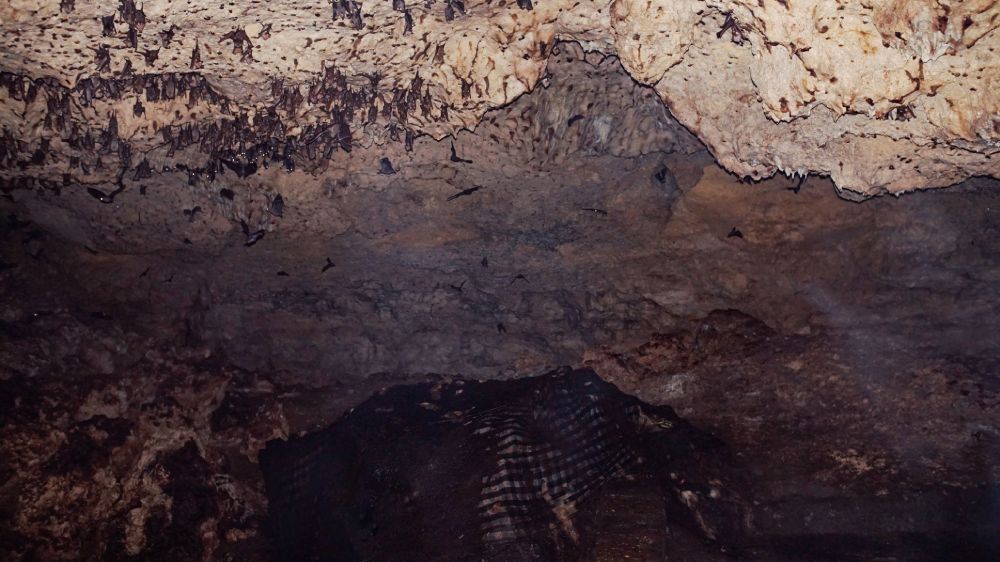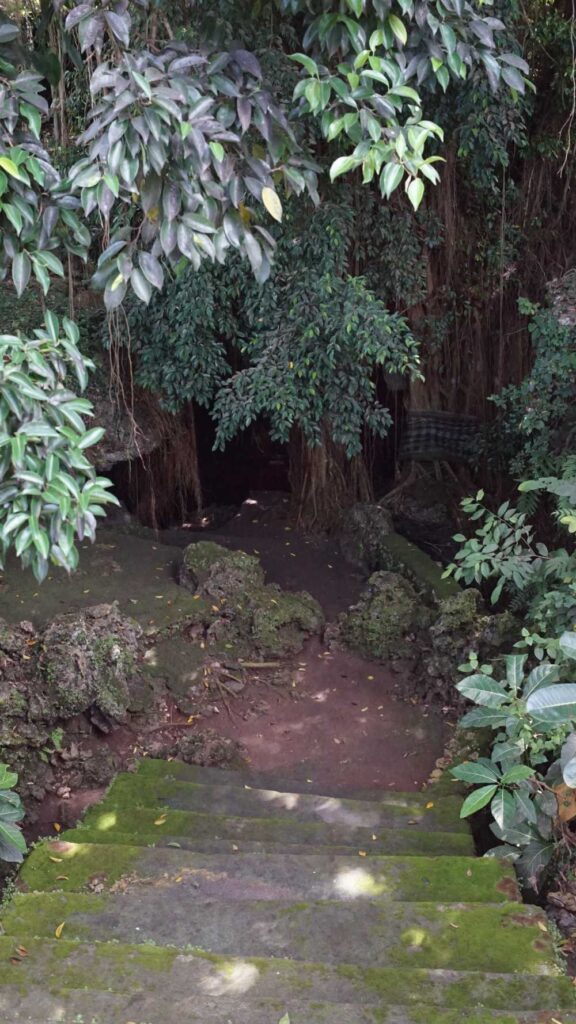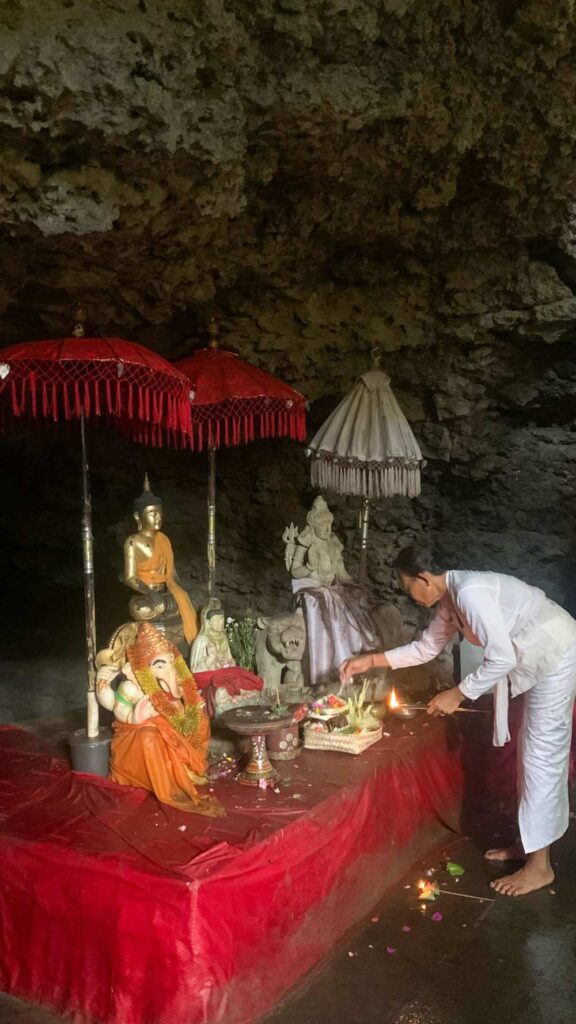
Buried deep in the limestone cliffs of Jimbaran is one of south Bali’s most serene temple caves. This sacred sanctuary goes by the name of Goa Peteng Alam Pura Tunjung Mekar and showcases just how spiritual Bali’s natural wonders can be.
A long limestone path leads to Goa Peteng, building the anticipation to this quaint but meaningful temple destination. Upon entering, an ethereal atmosphere is almost palpable, as sunlight streaks through the crags, illuminating sections of the gorged rock formations. The moist cave air is made thicker with incense, its sweet, spicy scene hanging like a cloud; and the squeaks of bats reverberate through the darkened hollows and cave walls. Those entering alone may be intimidated by its solemn ambience.
The spiritual energy inside Goa Peteng (Peteng Cave) is said to be at its peak. You are greeted with a banyan tree as you approach the pura (temple) grounds. An Ida Bhatara, a local deity, supposedly resides here, said to have hair that cascades down the large banyan tree. However, who dwelled inside the temple remains a mystery.


Deep caverns lie under and behind the main holy shrine, or pelinggih, accessed by taking a flight of stairs. The southern cave hosts two water springs, symbolic of purusa pradana, the masculine and feminine counterparts. Here, pilgrims can ask for and collect holy water (nunas tirta). The northern cave is where worshippers will observe the melukat, a holy water cleansing ritual, said to purify mind, body and spirit from negative aspects.
The cave was once vital to the survival of the indigenous population during the early stages of its discovery. The cave has two purportedly fresh and salty oasis waters. It was common practice for the locals to dip their feet in the salty oasis and collect potable water from the fresh oasis. Only in the 2000s was Goa Peteng consecrated, with locals performing a ceremony to officially mark its holiness.
Pura Tunjung Mekar, the temple itself, is a sacred place for prayer, reflection, and meditation for the Balinese, who hold it in the highest regard. People from around Bali and beyond often visit this sacred cave these days to perform melukat on holy days like Bayu Pinaruh, Purnama, and Kajeng Kliwon.
Everyone is welcome to visit the cave; however pejati offerings are required before entering, and of course respectful Balinese traditional attire. Stop by the Jero Mangku’s (priest) home to seek permission, and they will accompany you to the cave and perform the melukat rite if you’re interested in visiting Goa Peteng. You are invited to give a donation to the temple and priest.






